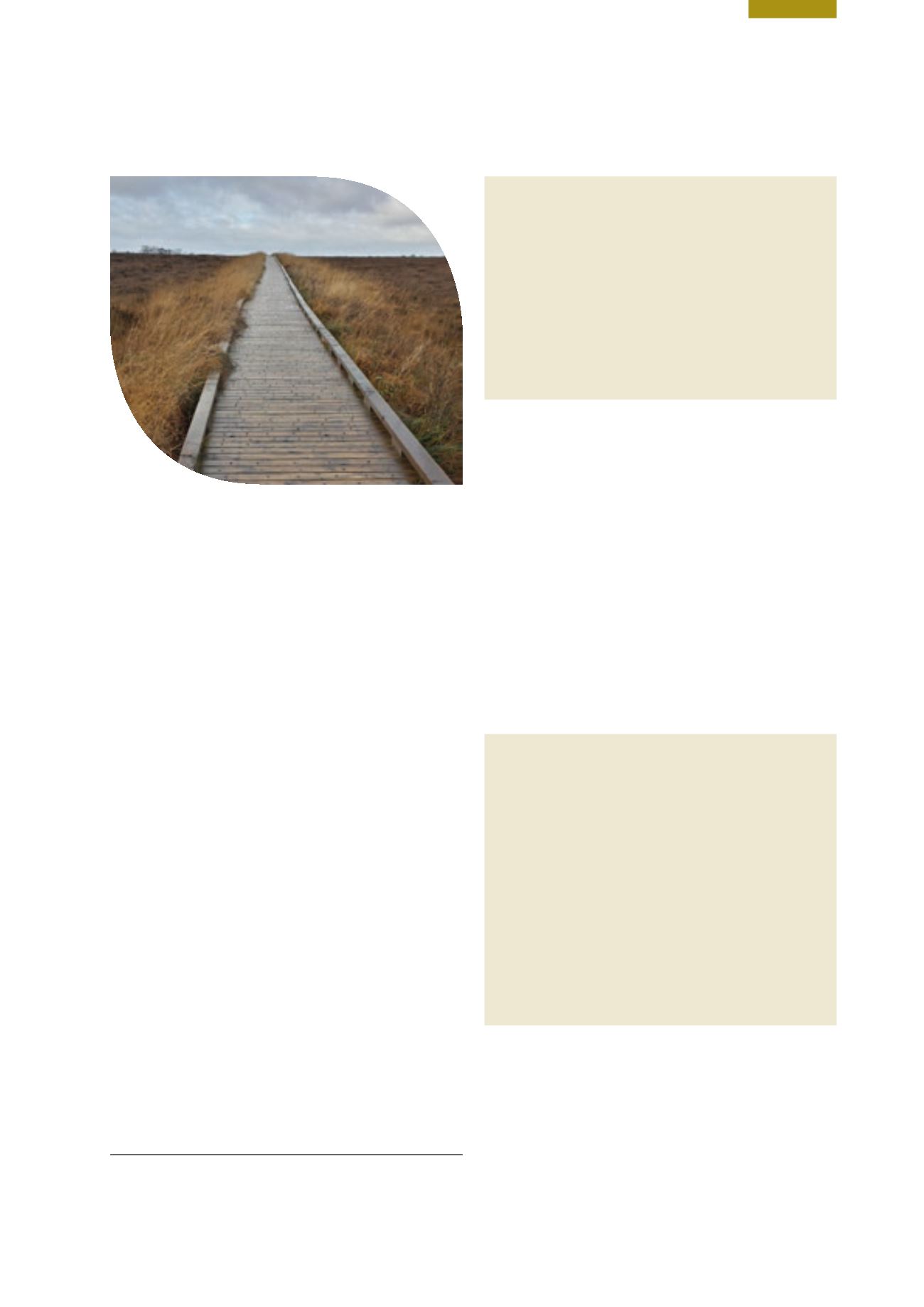

153
Chapter 9: Environment and the Economy
Ireland – Our Sustainable Future
International policy ambitions inform Ireland’s
sustainability strategy.
International policy ambitions have informed, and
will continue to inform, a raft of recent EU market
interventions, and many of them resonate with national
ambitions articulated in Ireland’s sustainability strategy
Our Sustainable Future
(DECLG, 2012).
The aims of this government policy are to provide for
the integration of sustainable development into key
areas of policy, to put in place effective implementation
mechanisms, and to deliver concrete measures to progress
sustainable development. A progress report on actions
under the national sustainability plan was published in
2014,
6
and, in 2015, the Central Statistics Office published
an updated set of national sustainable development
indicators that address national performance and also
consider performance with respect to other EU Member
States.
7
The progress report concluded that Ireland
continues to move in the right direction generally across
the spectrum of Sustainable Development Goals, while
recognising the role of the economic downturn in reduced
emissions and consumption. The report also concluded that
it will be important to maintain our focus on sustainability
through the period of economic recovery and growth. In its
2014 Climate Change Policy Position document, the Irish
Government articulated a vision to 2050 that integrates
the climate and sustainability imperatives in stating that
it aims “as a fundamental national objective, to achieve
transition to a competitive, low-carbon, climate-resilient
and environmentally sustainable economy by 2050”
(Government of Ireland, 2014).
6
www.housing.gov.ie/sites/default/files/publications/files/our_ sustainable_future_progress_2014.pdf7
www.cso.ie/en/media/csoie/releasespublications/documents/ environment/2015/sdi_2015.pdfOur Sustainable Future (DECLG, 2012) states that
“decoupling environmental degradation and resource
consumption from economic and social development
is an enduring challenge in Ireland as elsewhere and
requires a paradigm shift in our approach to future
development. The ‘business-as-usual’ approach
will not suffice; we require a major reorientation of
public and private investment, ... We need a more
developed ‘green economy’ focus, achieving a more
mutually supportive interface between environmental
protection and economic development, ...”
Key Current and Emerging
Policy Trends
Circular Economy
A model for sustainable production and consumption.
The coming years will need to see much greater effort –
at an institutional and commercial level – to secure
the supply, from sustainable sources, of the primary
and secondary raw materials necessary to sustain our
economies and our wellbeing. The recognition of the
limitation of critical raw materials, allied to the ambition
of resource efficiency and life cycle assessment for goods
and services, has evolved and coalesced into the concept
of the circular economy (EEA, 2016).
Circular Economy
While most discussion of the subject deals with the
“material flow” dimension of the circular economy
model, it must be understood that true economic
circularity is far more complex and involves matters
such as property rights, equity of access, valuing of
ecosystem services, resource productivity, fair and
safe social and employment structures, wellbeing
and resilience, clean technology, etc. It is, in fact,
sustainable development, but in recognition of the
dominance of the economic drivers, is repackaged
in more tangible economic models and production/
consumption cycles and enabling conditions
(Figure 9.5).
This model of sustainability (Figure 9.5) or, more accurately,
a model of sustainable production and consumption, looks
at the materials flowing through the economy (biological
and technical) and imagines the sustainable draw-down
and maximum utility of these resources/materials. It sees
the material or product value chain moving from a take–
make–use–dispose linear model to a closed loop that seeks
to minimise – if not eliminate – wastefulness at every stage
from resourcing, to design, manufacture, distribution,
use and post-consumption stages. The EU Raw Materials


















